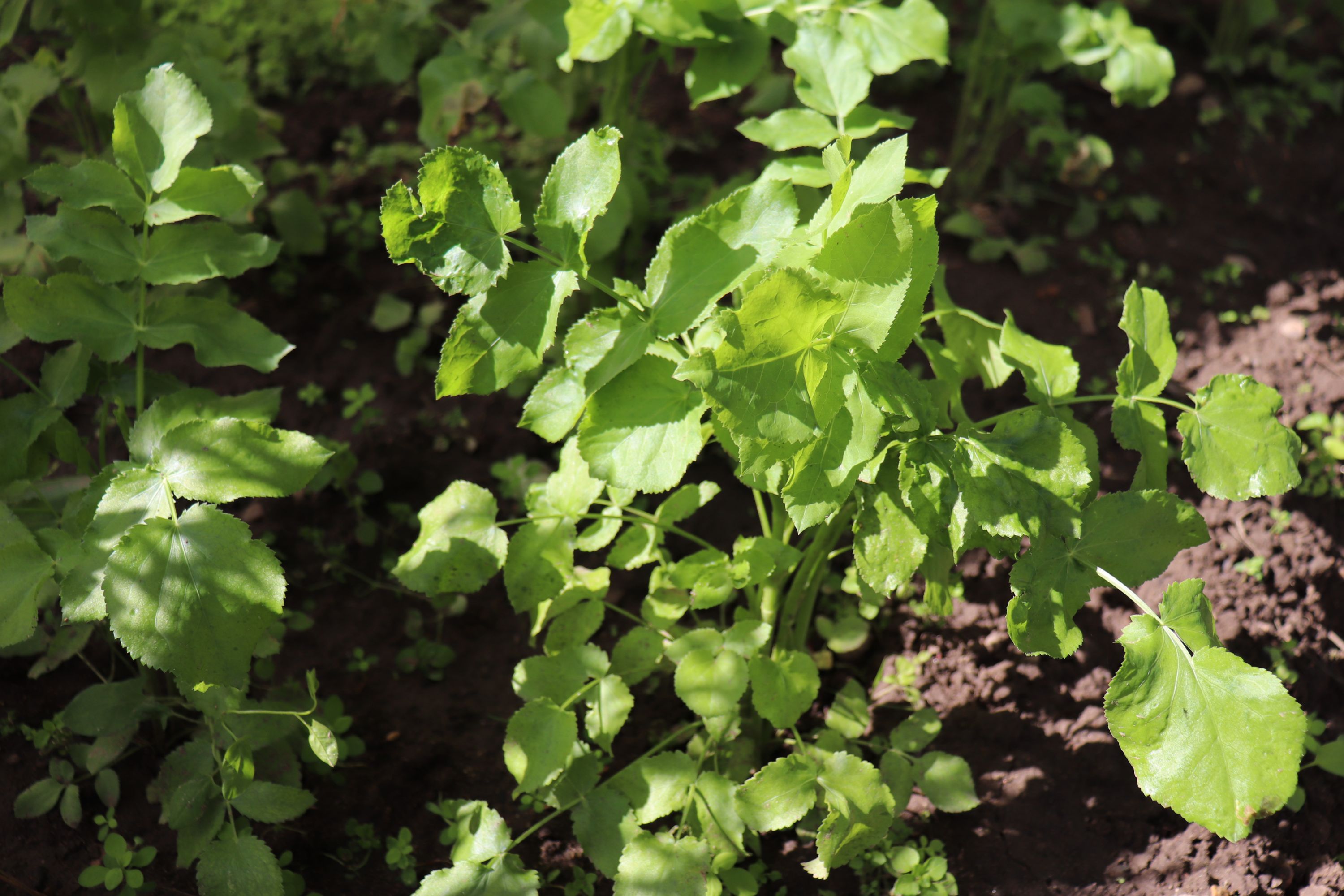Skirret
(Sium sisarum)

Description
Sium sisarum, commonly known as skirret, is a perennial plant of the family Apiaceae sometimes grown as a root vegetable. The English name skirret is derived from the Middle English 'skirwhit' or 'skirwort', meaning 'white root'. In Scotland it is known as crummock. Its Danish name sukkerrod, Dutch name suikerwortel and German name "Zuckerwurzel" translate as 'sugar root'. Skirret has a cluster of bright white, sweetish, somewhat aromatic roots, each approximately 15–20 centimetres (5.9–7.9 in) in length. These are used as a vegetable in the same manner as the common salsify, black salsify and the parsnip. The plant is of Chinese origin, but arrived in Europe by or before Roman times. It is presumed to be the siser mentioned by Pliny the Elder as a favourite of the Emperor Tiberius, though this may have also been a reference to a parsnip or carrot. The twelfth-century Benedictine abbess Hildegard von Bingen discussed the medicinal properties of skirret in her work Physica: Skirret (gerla) is hot and dry. Eaten in moderation, it is not very helpful or harmful. If someone should eat a lot of it, its heat and dryness would stir up fevers in him and harm his intestines. A person whose face has weak skin, which easily splits, should pound skirret in a mortar and add oil. When he goes to bed at night, he should rub it on his face, continuing until he is healed. A 1390 manuscript The Forme of Cury used by King Richard II of England's master cooks included two recipes for fritters that included 'skyrwates'. Maud Grieve in A Modern Herbal mentions that it has been cultivated in Great Britain since 1548 and is supposed to be a useful diet in chest complaints. The seventeenth-century English herbalist Nicholas Culpeper said about the plant: Sisari, secacul. Of Scirrets. They are hot and moist, of good nourishment, something windy, as all roots are; by reason of which, they provoke venery, they stir up appetite, and provoke urine. John Gerard's Herball or General Historie of Plantes of 1633 describes skirret thus: Sisarum. Skirrets. The roots of the Skirret be moderately hot and moist; they be easily concocted; they nourish meanly, and yeeld a reasonable good iuice: but they are something windie, by reason whereof they also prouoke lust.
Taxonomic tree:







